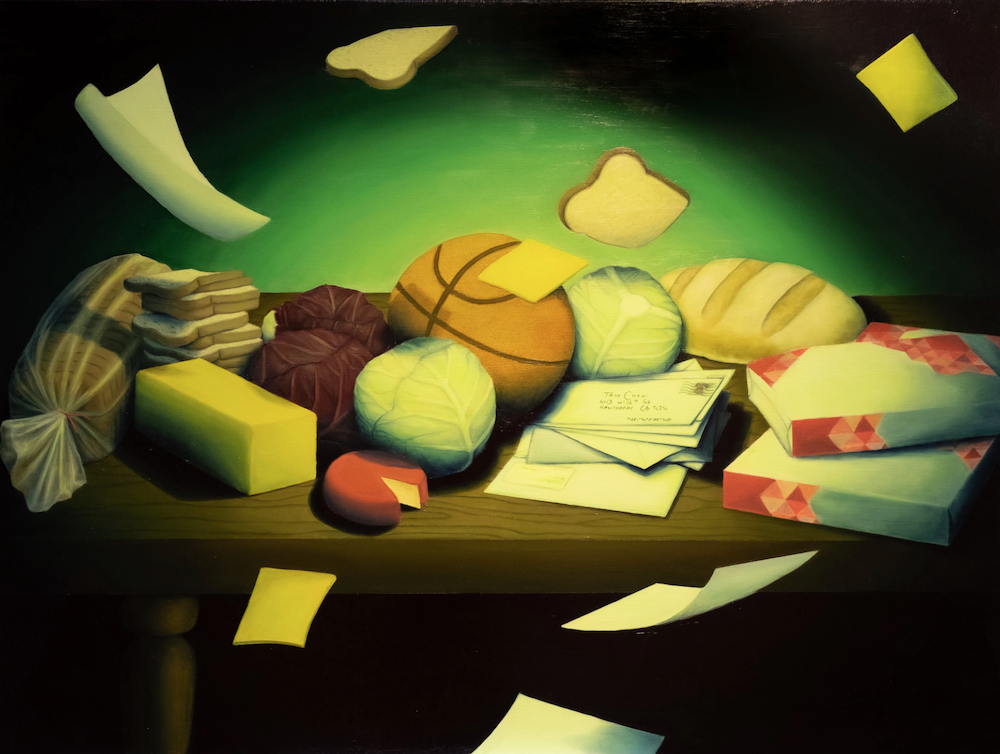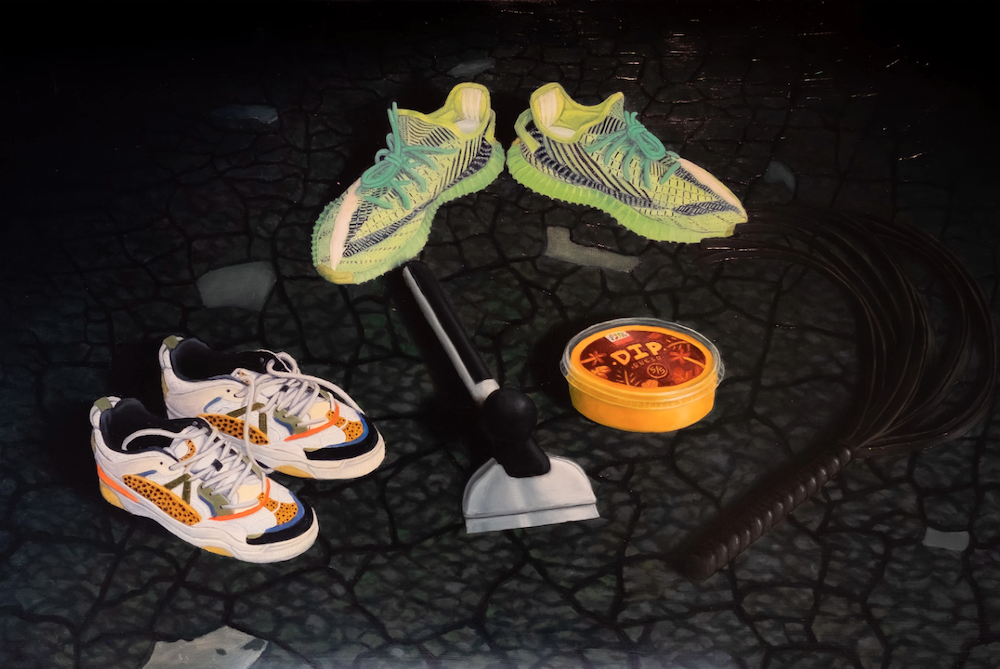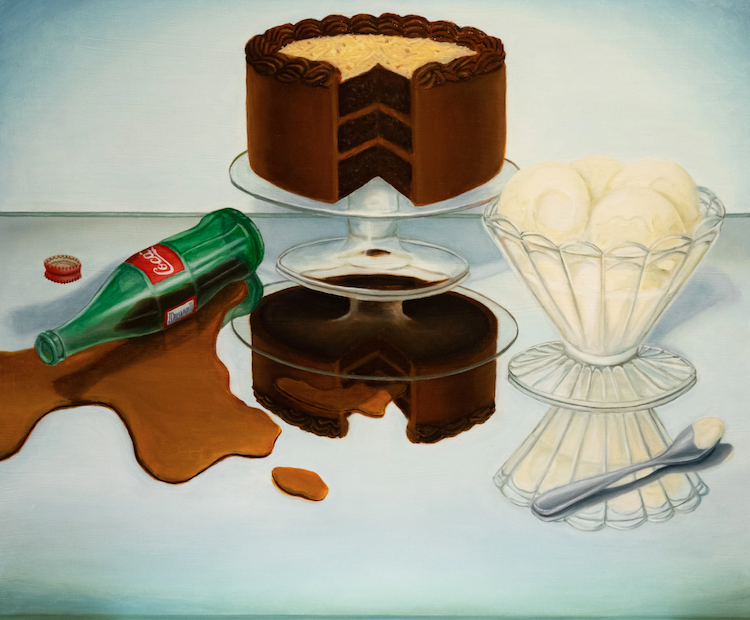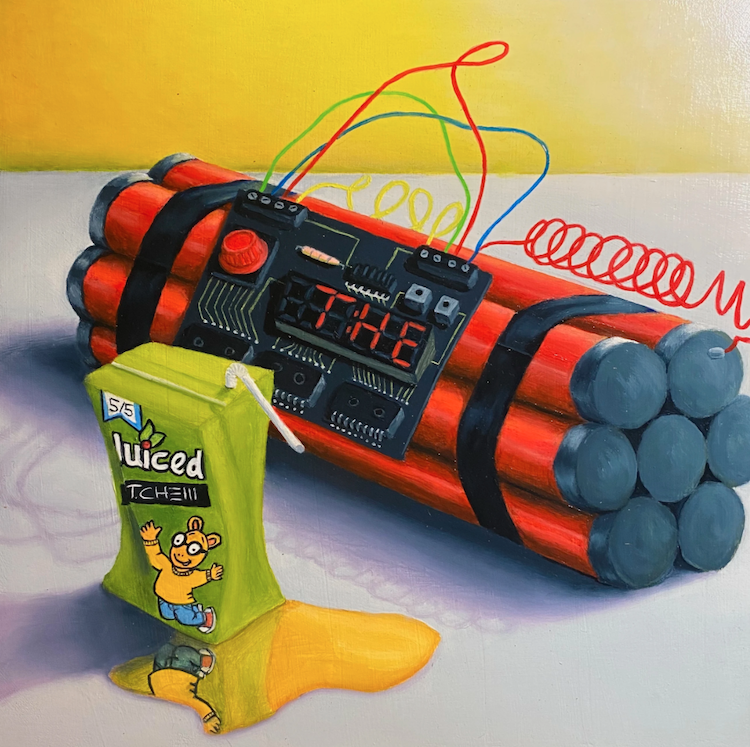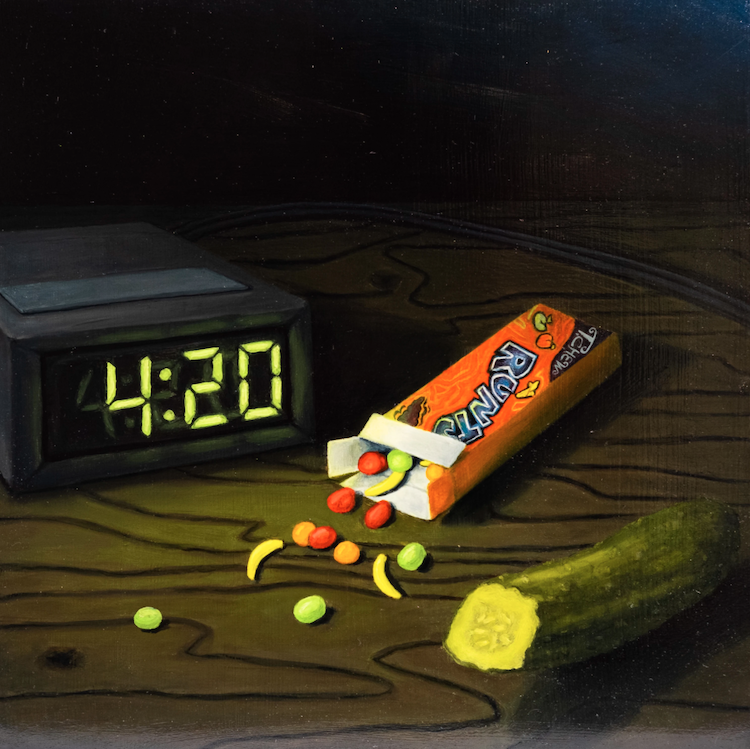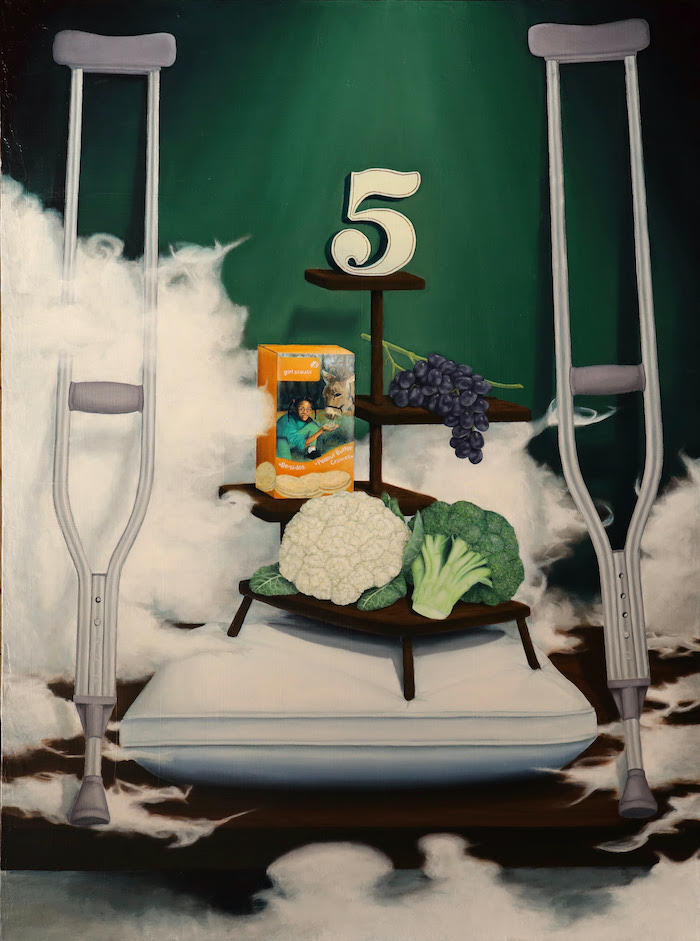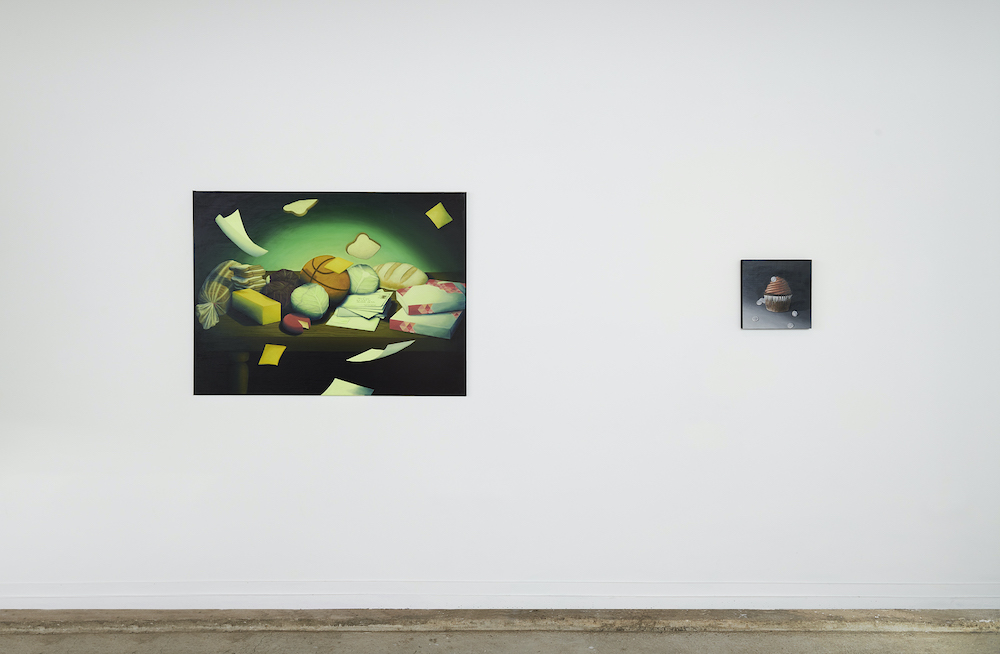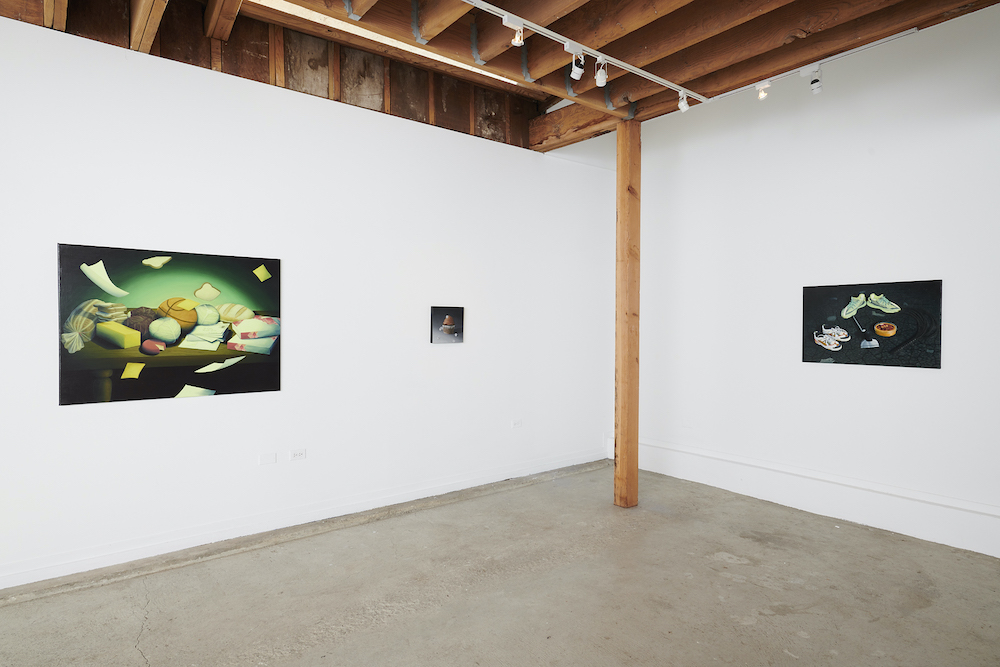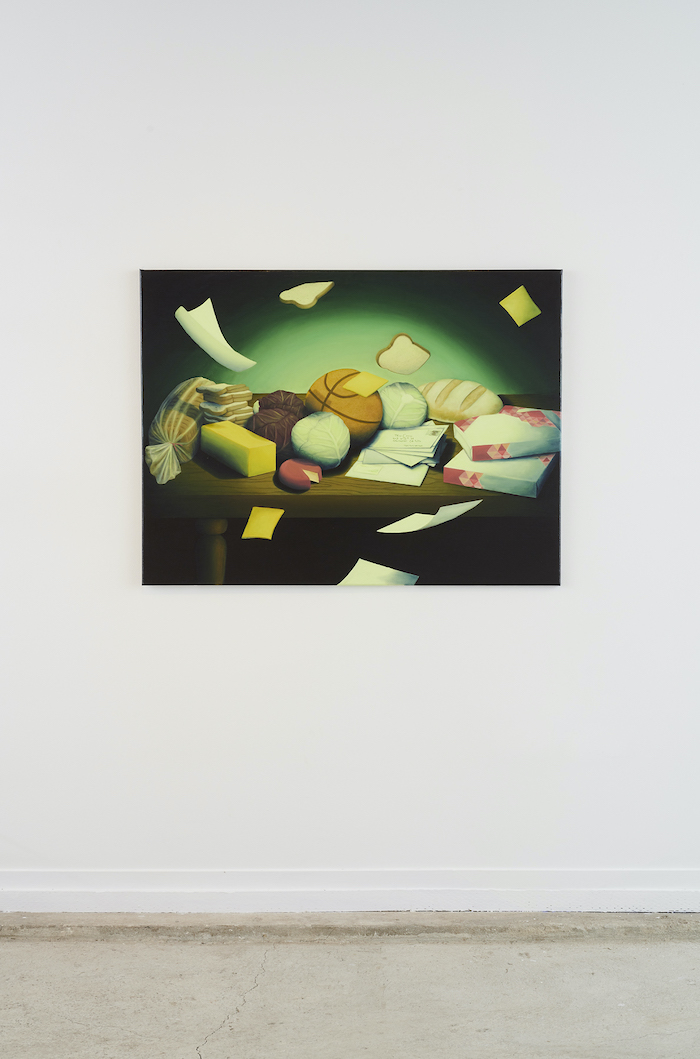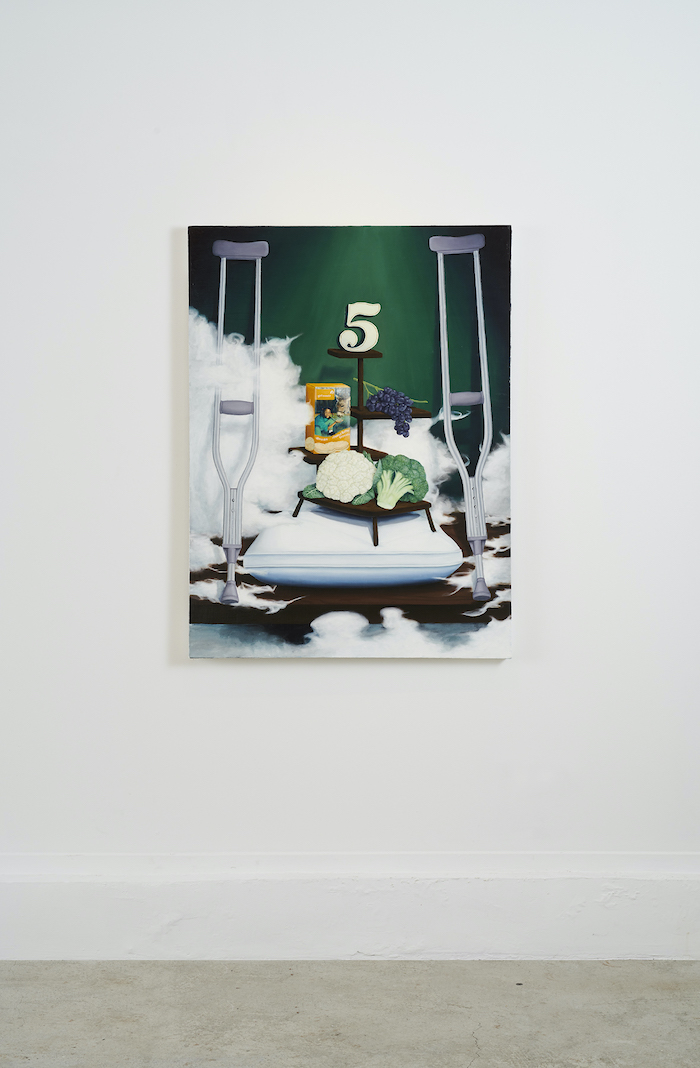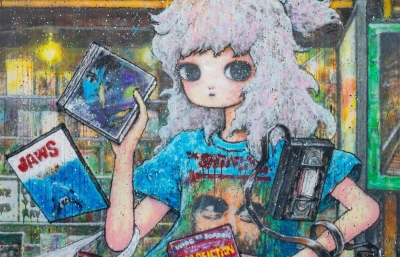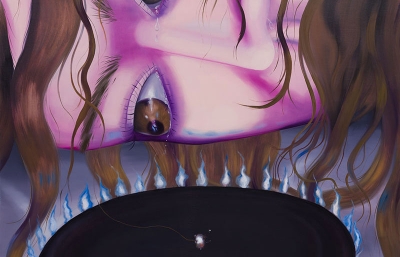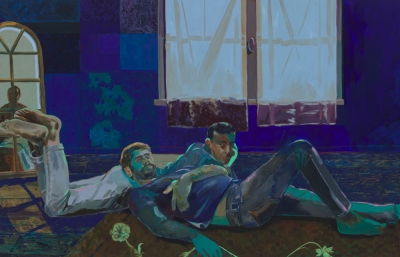CULT Aimee Friberg Exhibitions is pleased to announce Yadadamean, a solo exhibition of oil paintings by artist Troy Chew. The show is on view through December 5, 2020, with Yadadamean marking Chew’s first solo exhibition with the gallery.
Chocolate cake, vanilla ice cream and Coca Cola presented together on a tabletop easily recalls a setup for celebration. Troy Chew’s portrayal of this assortment of delicacies, titled Yay Area, however, is a coded play on the lexicon of Hip Hop, slang terminology and Bay Area culture. Chew arranges the objects akin to scenes in Flemish still life paintings. By repurposing everyday items from the African Diaspora into fine art compositions, Chew’s paintings embody a smooth detachment from European painting traditions.
Yadadamean is a continuation of Chew’s Slanguage series—a reference to the colloquial speech rooted in Black linguistics. Yadadamean, a more efficient term for, “You know what I mean?” presents an assortment of terms and imagery born in the ‘Yay Area’, or Bay Area for the non-locals’ iteration. Chew’s still lifes provoke viewers to reflect on the historical exclusion of Blackness in Western art, despite the multitudinous facets of Black culture that have shaped mainstream aesthetics, culture and vernacular. The works recall the genesis and evolution of Hip Hop—created in the 1970s in South Bronx by youth who were excluded from the mainstream, it was a rebuttal to a system of social and economic inequality. Hip Hop, and countless other forms of Black creation, existed as incubation spaces for the sharing of stories and forming of Black communities.
Chew regroups the nuance of Black expression from Hip Hop, specifically Bay Area Hip Hop, and investigates the language used to speak about money, cars, women and drugs. Before mainstream acceptance, slang and weed were linked to the Black community as means of vilification and typecasting. Chew incorporates this slang, often criticized as ‘broken English,’ into his paintings through short and sometimes nondescript titles. By combining “high’' brow composition with pop culture imagery—such as broccoli, a basketball, Girl Scout Cookies and Yeezys—Chew elevates and embraces these everyday objects and works to reverse the stereotypes associated with them.
In Yay Area, an assemblage of party novelties is strewn on a reflective glass surface. In Ghost Rider, another assortment rests on asphalt. These surfaces parallel the ones found in Flemish still lifes, where tabletops existed as scenes of performance—themes of excess, gluttony, carnage and feasting commingled here with heaps of a timeless dietary temptation, bread. This trope is expanded in Ball Street Journal where loaves of bread lie next to cabbage, basketballs and paper.
Flemish still lifes were also replete with memento mori—reminders of death and decay. Likewise, Chew’s paintings allude to the mortality of language. The originators of Hip Hop developed a specific language to communicate shared experiences amongst others in their community. Language formed nurturing spaces; slang repurposed bread as the hustle for money while to outsiders bread remained a mealtime accessory. Yaddamean challenges this ongoing erasure—the proliferation and sometimes co-opting of language—with skillful iconography that recreates a safe space for language and culture.

